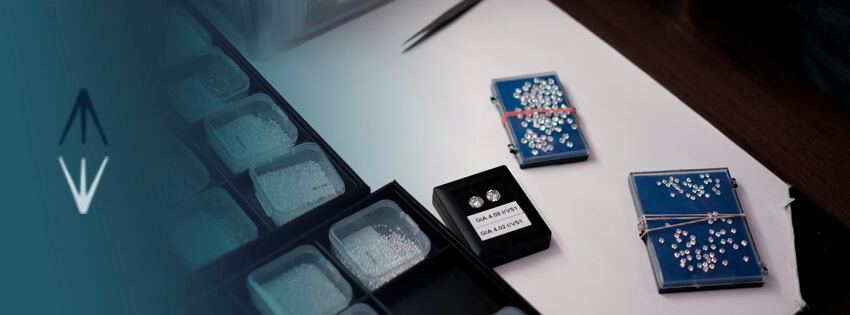Investing in diamonds has long been considered an attractive option due to their durability, beauty, and symbolic value. But are diamonds truly a good financial investment? In this comprehensive guide, we’ll explore the pros and cons of investing in diamonds so you can make an informed decision. If you’re looking to purchase diamonds, it’s important to understand not just their emotional value but also their potential as an asset.
1. Why Consider Diamonds as an Investment?
Diamonds possess unique characteristics that distinguish them from other financial assets. Here are some reasons you might consider investing in them:
- Durability: Diamonds are eternal, quite literally. Their resilience makes them assets that can be passed down through generations.
- Portability: Unlike other investments, such as real estate, diamonds are easy to transport and store.
- Diversification: Adding diamonds to your portfolio can help diversify your investments.
- Symbolic Value: Beyond their financial worth, diamonds carry emotional and aesthetic appeal that makes them unique.
If you’re interested in purchasing a diamond for investment or as a personal symbol, consult our complete guide to buying diamonds to ensure you make the best decision.
2. Key Factors to Consider Before Investing in Diamonds
Before investing, it’s essential to understand key factors that can influence the value of diamonds:
- Certification: Ensure diamonds are certified by recognized institutions such as the GIA (Gemological Institute of America).
- The 4Cs: A diamond’s cut, color, clarity, and carat weight determine its quality and value.
- Secondary Market: Unlike gold or stocks, diamonds lack a standard secondary market, making resale challenging.
- Price Transparency: Diamond values can vary based on subjective factors like rarity or current demand.
For more details on selecting the right diamond for your needs, check out our guide on choosing the perfect diamond.

3. Pros and Cons of Investing in Diamonds
Below is a comparative table of the pros and cons of investing in diamonds:
| Pros | Cons |
|---|---|
| Durability: Diamonds are extremely resistant and durable. | Lack of Liquidity: Selling diamonds quickly isn’t always easy. |
| Portability: They are easy to transport and store. | Subjective Value: Prices can be influenced by trends and fashion. |
| Diversification: They help diversify an investment portfolio. | Unregulated Market: The absence of a standardized secondary market complicates resale. |
| Emotional Appeal: They hold unique aesthetic and symbolic value. | Additional Costs: Include certification, storage, and insurance. |
| Potential Returns: Rare diamonds may increase in value over time. | Risk of Fraud: Without proper certification, fraud is a real risk. |
4. Alternatives to Investing in Diamonds
While diamonds can be an attractive option, it’s worth considering alternatives that might offer greater liquidity or lower risk, such as:
- Precious Metals: Gold and silver have more established secondary markets.
- Traditional Investments: Stocks, bonds, or real estate offer more predictable options.
- Synthetic Diamonds: Although they lack the same emotional value, lab-grown diamonds are more affordable and sustainable.
5. Tips for Investing in Diamonds
- Only Buy Certified Diamonds: This ensures their authenticity and quality.
- Research the Market: Understand current trends and pricing.
- Think Long-Term: Diamonds rarely yield quick profits; their value tends to appreciate over time.
- Consult Experts: Seek professional advice before making significant investments.
FAQs About Whether Diamonds Are a Good Investment
1. Are diamonds a safe investment?
Diamonds are safe in terms of durability since they are extremely resilient and don’t deteriorate over time. However, their financial value depends on the market, quality, and demand, so returns are not guaranteed.
2. What factors affect a diamond’s value as an investment?
A diamond’s value is influenced by the 4Cs (cut, color, clarity, and carat), certification, market demand, and rarity. Additionally, the lack of a standardized secondary market affects liquidity.
3. What certifications should I look for when buying diamonds for investment?
The most recognized certifications are issued by the GIA (Gemological Institute of America) and the IGI (International Gemological Institute), ensuring the diamond’s authenticity and quality.
4. Are diamonds more profitable in the long term?
Yes, diamonds can be more profitable in the long term, particularly rare or high-quality stones. However, their value appreciation is typically slower compared to other traditional investments.
5. What are the alternatives to investing in diamonds?
Alternatives to diamonds include precious metals like gold and silver, traditional investments like stocks and bonds, and synthetic diamonds, which are more accessible and sustainable.
Conclusion
Investing in diamonds can be a good option to diversify your portfolio and acquire a tangible asset with emotional value. However, it’s crucial to be aware of challenges such as liquidity issues and subjective pricing. If you decide to invest, make sure to do so strategically and with proper information.
Learn more about the world of diamonds on our main diamond page and explore our guides to make informed and secure decisions.




